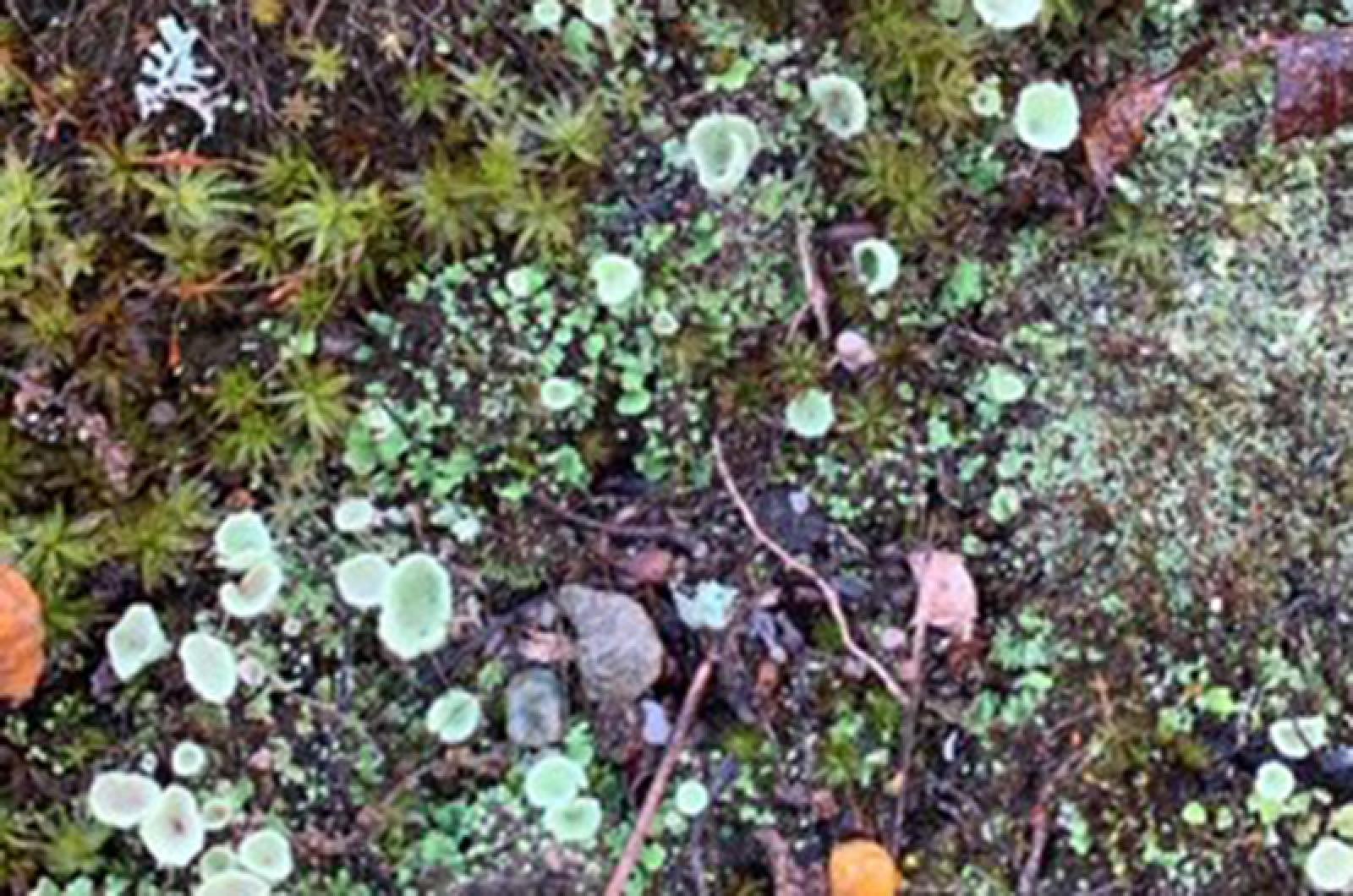If pixies wrote personal ads or Tinder profiles, one might go like this: “Small, mischievous sprite who enjoys the outdoors, dancing to the music of frogs and crickets, and cavorting by the light of the moon seeks night-loving, ground-dweller to make trouble together. Green skin and pointy ears a plus.”
For those lucky enough to score a date with this mysterious creature, a drink in a pixie cup lichen goblet would be just the thing in which to toast to the evening’s revelry.
Pixie cup lichen is not a thing of fantasy; it is an organism that serves more than just fairy romance. Found amongst mosses and growing in groups, pixie cup lichen is the complex interaction of two organisms that form something completely different when they come together.
That well describes lichen, which is the joining of an algae and a fungus. Algae is the photobiont, providing food in the form of photosynthesis, while the fungus serves as the mycobiont, affording the structure, holding moisture and absorbing nutrients.
This dual citizen hailing from two biological kingdoms has been used historically by humans (in addition to pixies). In the toughest of times, pixie cup lichens have been consumed as sustenance of last resort, or famine food, though a bite is not recommended unless you are in dire straits.
Medicinally, pixie cup lichens are reputed to have possible success as an antibacterial. Containing didymic acid, these lichens were once collected due to the belief that they could treat tuberculosis. Eskimos were more interested in their light-producing power. They harvested the lichen for long-lasting blubber oil lamp wicks. By floating the stem-like structure in the oil and lighting the top, the flame would persist and serve to brighten dark days and nights.
Currently, the rage for these miniatures is for inclusion in fairy gardens or under glass gardens, and they can be purchased on Etsy and other craft sites. Collecting pixie cup lichen in the wild is another option; though if you must harvest, limit your take, for this organism grows very slowly and the gathering of them can disrupt their mossy neighbors.
These tough little cups are known for their heartiness, able to survive extremes of temperature and live exceptionally long lives. One of the older colonies was dated back 4,500 years.
Reproduction, like their pixie namesake, is enchanting. These lichens can breed by fragmentation, when a piece breaks off and becomes its own individual organism. The other method of magical multiplication is by pixie dust. No, seriously. In the cups of the lichen are soredia, which appears as minty green dust. The soredia, or propagules (spores), contains some algal and fungal cells that will be released by wind or when raindrops splash them out of their cups and produce new pixie cups. That explains why they are found in colonies or families; those nearby are the children and parents of each other.
James M. Barrie, author of Peter Pan, may not have known that, but he knew much about magic and perhaps a little bit about lichen when he explained, “All the world is made of faith, and trust, and pixie dust.”
Suzan Bellincampi is director of the Felix Neck Wildlife Sanctuary in Edgartown, and author of Martha’s Vineyard: A Field Guide to Island Nature and The Nature of Martha’s Vineyard.







Comments
Comment policy »